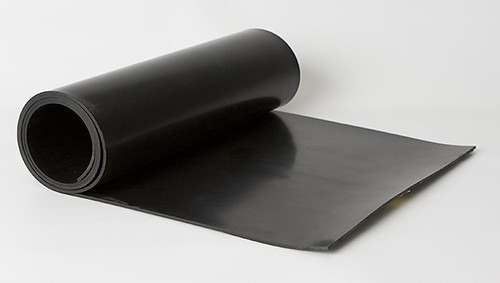Butyl Rubber is a synthetic rubber made out of isobutylene and isoprene copolymers. IIR is an abbreviation for isobutylene isoprene rubber. The homopolymer of isobutylene, or 2-methyl-1-propene, on which butyl rubber is based is polyisobutylene, often known as "PIB" or polyisobutene (C4H8)n. Isobutylene and isoprene are polymerized to make butyl rubber, which is made up of 98 percent isobutylene and 2% isoprene. Polyisobutylene is structurally similar to polypropylene, but it has two methyl groups on every other carbon atom instead of one. Polyisobutylene is a viscoelastic substance that ranges in hue from colorless to light yellow. It is odorless and tasteless in most cases, though it may have a little odor.
Isobutylene-isoprene rubber, often known as butyl rubber, is a synthetic rubber made by polymerization isobutylene with minor amounts of isoprene. Butyl rubber is used in the inner linings of automotive tires and other speciality applications because of its chemical inertness, impermeability to gases, and weatherability. Butyl rubber is typically made by thermal cracking of natural gas or lighter crude oil fractions. Isobutylene is a gas and isoprene is a volatile liquid at room temperature and pressure. Isobutylene is diluted with methyl chloride and refrigerated to very low temperatures (about 100 °C [150 °F]) for processing into IIR. In the presence of aluminum chloride, low amounts (1.5 to 4.5 percent) of isoprene are introduced, which commences the copolymerization reaction between the two chemicals (i.e., their single-unit molecules link together to form giant, multiple-unit molecules).
IIR having only a tiny amount of isoprene is as strong as natural rubber because the basic polymer, polyisobutylene, is stereoregular (i.e., its pendant groups are placed in a regular order along the polymer chains) and the chains crystallize swiftly on stretching. Furthermore, because the copolymer contains few unsaturated groups (represented by the carbon-carbon double bond in each isoprene repeating unit), IIR is relatively resistant to oxidation—a process in which oxygen in the atmosphere reacts with the double bonds and breaks the polymer chains, causing the material to degrade.
Butyl rubber also has an extraordinarily slow rate of molecular motion, even at temperatures much over the glass transition point (the temperature above which the molecules are no longer frozen in a rigid, glassy state). The copolymers' very low permeability to gases, as well as its outstanding resistance to ozone damage, reflect this lack of mobility.
1. inner tubes
2. inner liners of tubeless tires
3. window strips
